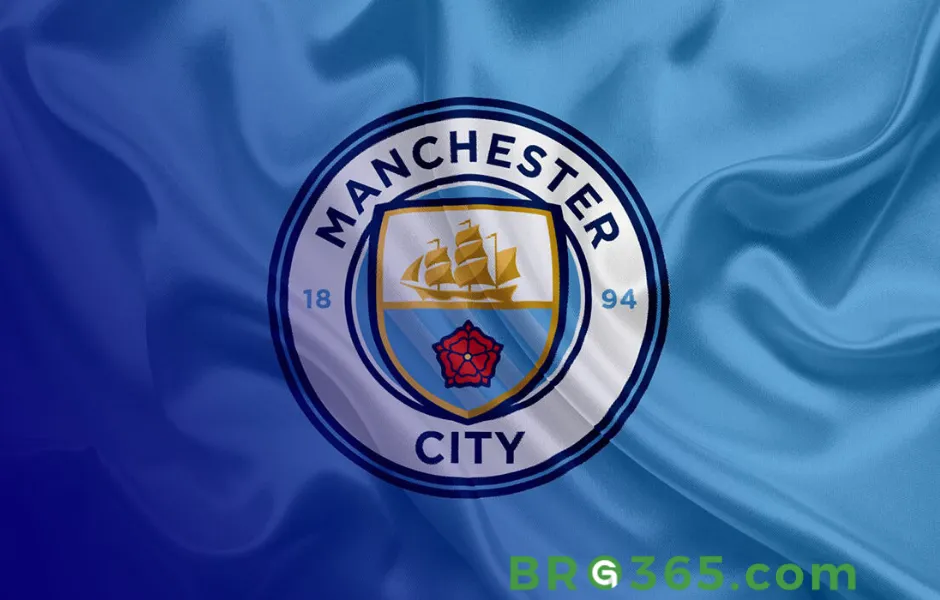From a 19th-century church team to European champions, Manchester City’s journey is defined by resilience and reinvention.
Explore how Man City standings evolved through key historical phases, cultural identity, and strategic shifts, all anchored in their iconic blue moon legacy.
Follow BRG365 for exclusive club stories!

Founding Early Years
From St. Mark’s to Manchester City
Founded in 1880 as St. Mark’s (Gorton), the club emerged from Manchester’s working-class neighborhoods, supported by Reverend Arthur Connell and his daughter Anna.
The initial vision was to create a team for local factory workers, reflecting the city’s industrial spirit.
Renamed Ardwick AFC in 1887—after the district they represented—and Manchester City in 1894, the club’s early decades were marked by financial struggles and constant relocations:
1880–1894: Hopped between five home grounds, including Clowes Street and Hyde Park, with crowds rarely exceeding 5,000. The lack of a stable home mirrored their precarious status in the lower leagues.
1899: Earned promotion to the First Division after a dramatic playoff victory, a milestone that hinted at future ambition but was followed by immediate relegation in 1901—a stark reminder of their early instability.
Triumph and Betrayal (1904)
In 1904, City won their first major trophy (FA Cup), defeating Bolton 1–0 at Crystal Palace.
The victory sparked hope, but it was short-lived. A 1905 investigation uncovered financial misconduct, leading to 17 players, including star winger Billy Meredith, being suspended.
Meredith’s move to Manchester United wasn’t just a transfer; it was a betrayal that seeped into the club’s DNA, fueling a rivalry defined by class and loyalty.
Fans adopted the slogan "City till I die" as a defiant response, solidifying their underdog identity.
1930s Rollercoaster: Glory and Fall
1937: Clinched their first First Division title with a record-breaking 107 goals, led by striker Eric Brook’s 38 strikes. The team’s "pass and move" style was ahead of its time, but complacency set in.
1938: Shockingly relegated after a dismal campaign, becoming the only English champions to drop a division the following year. This failure haunted the club for decades, symbolizing the fragility of success in Man City standings.
Read More: Kevin De Bruyne: The Pulse of Manchester City
Key Historical Milestones

Manager Joe Mercer’s arrival in 1965 marked a turning point. With assistant Malcolm Allison, he built the "Team of the Century," blending youth and experience:
1968: Won the First Division title by a single point over rivals United, thanks to Neil Young’s late winner against Newcastle.
The squad, featuring Colin Bell (87 goals in 405 games) and Francis Lee (148 goals), embodied grit and flair.
1970: Secured their first European trophy (UEFA Cup Winners’ Cup), defeating Gornik Zabrze 2–1 in Vienna.
The victory showcased City’s ability to compete on the global stage, lifting Man City’s standings to new heights.
2012: Aguero’s Last-Gasp Legacy
The 2011–12 season remains etched in football lore. Needing a win to overtake United, City trailed QPR 2–1 until the 90th minute.
Edin Džeko’s header equalized, and in the 94th minute, Sergio Agüero latched onto a loose ball to score the winner.
The scenes of delirium at the Etihad—captured in the documentary All or Nothing—symbolized the club’s defiance of decades of underachievement.
"Aguerooo!" became a rallying cry, defining an era of dominance.
2017–18: The 100-Point Dynasty
100 points, 106 goals, 18 consecutive wins: These records weren’t just numbers—they were a statement. The team’s "tiki-taka" style, led by Kevin De Bruyne (16 assists), made them the most feared side in Europe.
Man City standings transformation: From a club once satisfied with mid-table finishes to a juggernaut chasing perfection.
2023:Treble and European Domination
The 2022–23 season was historic. City defeated United in the FA Cup final, secured the Premier League with a dramatic win over Arsenal, and capped it with a 1–0 Champions League final victory over Inter Milan.
Ilkay Gündogan’s brace in the FA Cup and Rodri’s winner in Istanbul symbolized a team finally conquering their European demons, elevating Man City standings to elite status alongside Real Madrid and Bayern Munich.
Read More: Manchester City's All-Time Best XI: Legends Who Defined a Football Dynasty
Key Standings Of Man City
|
Year |
Competition |
Position/Points |
Goals For/Against |
|---|---|---|---|
|
1937 |
First Division |
1st |
107/44 |
|
1968 |
First Division |
1st |
68/32 |
|
2012 |
Premier League |
1st |
89/39 |
|
2018 |
Premier League |
1st (100 points) |
106/27 |
|
2023 |
Champions League |
Winners |
39/16 |
Culture and Values
Blue Moon Identity

Nickname Origin: The song Blue Moon, written in 1934, was adopted by fans in the 1980s during a period of prolonged trophy drought.
Its lyrics, "Once in a blue moon, you saw me standing alone," became a mantra for patient supporters.
Fan Anthem: Sung in unison at the 72nd minute of every home game (a nod to the club’s 1972 Second Division title), it now signifies unity rather than longing, echoing through the Etihad’s rafters.
Manchester Derby Rivalry
Historical Context: Before 2008, United dominated the derby (48 wins vs. City’s 36). Post-takeover, City flipped the script, winning 16 of 28 clashes, including the 2023 Champions League semifinal.
Memorable Clashes: The 2011 6–1 thrashing at Old Trafford, where Mario Balotelli’s "Why Always Me?" celebration became iconic, and the 2021 Premier League decider, where City won 2–1 to retain their title.
Community at Heart
City in the Community: Launched in 1986, the program offers free coaching to 35,000 people annually, including refugees and disabled athletes.
The "Street League" initiative has helped 1,500 young people into employment since 2010.
Youth Development: The City Football Academy, opened in 2014, boasts 16 pitches, a hydrotherapy pool, and a sports science lab.
Graduates like Phil Foden (200+ appearances) and Rico Lewis (2023 treble winner) embody the club’s commitment to homegrown talent.
Crest Evolution
1894–1965
-
Design: The initial Logo featured a ship (honoring Manchester’s canal connection to the sea), a red rose (Lancashire’s symbol), and three wavy lines (representing the Irwell, Medlock, and Irk rivers).
-
Symbolism: It was a badge of industrial pride, connecting the club to the city’s working-class roots.
1965–2015
-
1965 Redesign: Dropped the ship, focusing on a bold red rose and a blue shield, reflecting the club’s growing ambition.
-
1997 Update: Added a blue ribbon with "Manchester City" and a gold star (for European achievements), a nod to the club’s 1970 Cup Winners’ Cup triumph.
2016
-
Sleeker Design: Created by global agency FutureBrand, the new crest simplified the rose and rivers, using a modern font and metallic blue. The star was removed, sparking debate: "Does a treble-winning club need a star?"
-
Brand Alignment: The design mirrored the Abu Dhabi owners’ vision of a global brand, balancing heritage with professionalism. While some fans mourned the "loss of soul," it became a symbol of the club’s new era.
Manchester City’s story is a microcosm of resilience.
From the mud of Hyde Road to the glory of Etihad, their Man City standings reflect a club that turned adversity into ambition.
As they prepare to expand Etihad and nurture the next generation of talent, the Blue Moon’s rise continues—not just as champions, but as a symbol of what perseverance can achieve.
Also Read: Man City Unveil 2025/26 Home Jersey with Historic Sash Design
